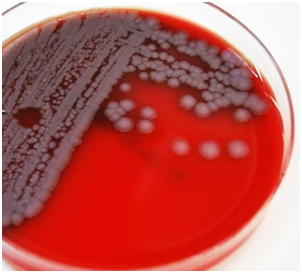Endotoxins are microbial toxins which are produced only on cell lysis i.e. on cell death. They are lipopolysaccharide (LPS) components of the outer membrane of Gram-negative bacteria. Endotoxins produce their effect in a host by activating the complement system by the alternative pathway.
They also activate the production of macrophages and B cells; and exotoxins are unique in that they are pyrogenic in action (i.e. they produce fever in their host). Endotoxins which are normally produced by dead bacterial cells can cause bacterial sepsis (shock) and intravascular coagulation in a host when they are produced in large amount by a pathogenic bacterium.
But in small amounts, endotoxins produce a variety of effects which may include inflammation, vasodilation, fever and increased antibody production in vivo. Endotoxins are not manifested by living and intact bacterial cells but are only secreted when the cells disintegrate.
In the laboratory, the Limulus Amoebocyte Lysate (LAL) test is used to assay the levels of endotoxin production in a host or a pharmaceutical product. Endotoxins are also known as LPS, and they are divided into three (3) components or regions viz:
- Lipid A
- Sugar core
- O antigen
The sugar core and O antigen are both the carriers of lipid A which is the biologically active component of LPS (endotoxins).
CHARACTERISTICS OF ENDOTOXINS
Bacterial endotoxins are known to exhibit some of the following features:
- They are mainly produced by dead Gram-negative bacteria.
- Endotoxins are heat stable, and can withstand temperatures as high as 60oC.
- They are toxic both at low and high dosages, but their effect are mostly observed in a host at a high concentration.
- Endotoxins are weakly immunogenic, and thus cannot produce antitoxins.
- They produce systemic effects such as fever and shock in a host.
- Their secretion is directed by chromosomal DNA.
- Endotoxins are fever-producing toxins, and they cause fever in their host through the production of interleukin-1 and other immunological mediators such as cytokines.
- They are integral parts of the cell wall of Gram-negative bacteria.
References
Brooks G.F., Butel J.S and Morse S.A (2004). Medical Microbiology, 23rd edition. McGraw Hill Publishers. USA. Pp. 248-260.
Madigan M.T., Martinko J.M., Dunlap P.V and Clark D.P (2009). Brock Biology of microorganisms. 12th edition. Pearson Benjamin Cummings Publishers. USA. Pp.795-796.
Prescott L.M., Harley J.P and Klein D.A (2005). Microbiology. 6th ed. McGraw Hill Publishers, USA. Pp. 296-299.
Ryan K, Ray C.G, Ahmed N, Drew W.L and Plorde J (2010). Sherris Medical Microbiology. Fifth edition. McGraw-Hill Publishers, USA.
Singleton P and Sainsbury D (1995). Dictionary of microbiology and molecular biology, 3rd ed. New York: John Wiley and Sons.
Talaro, Kathleen P (2005). Foundations in Microbiology. 5th edition. McGraw-Hill Companies Inc., New York, USA.
Discover more from Microbiology Class
Subscribe to get the latest posts sent to your email.





